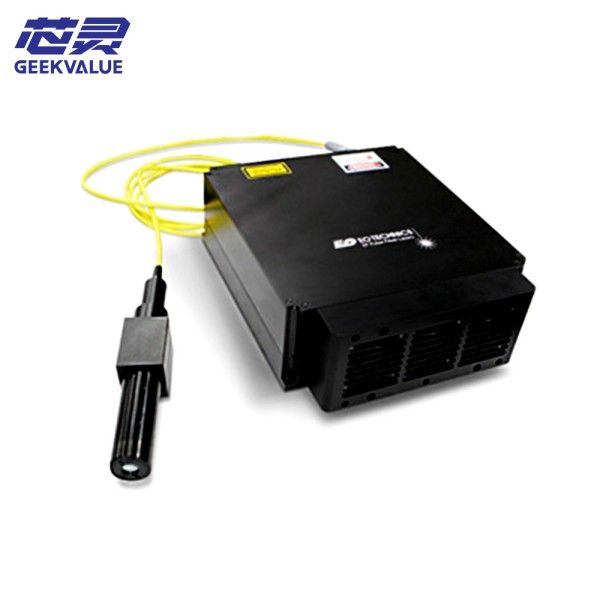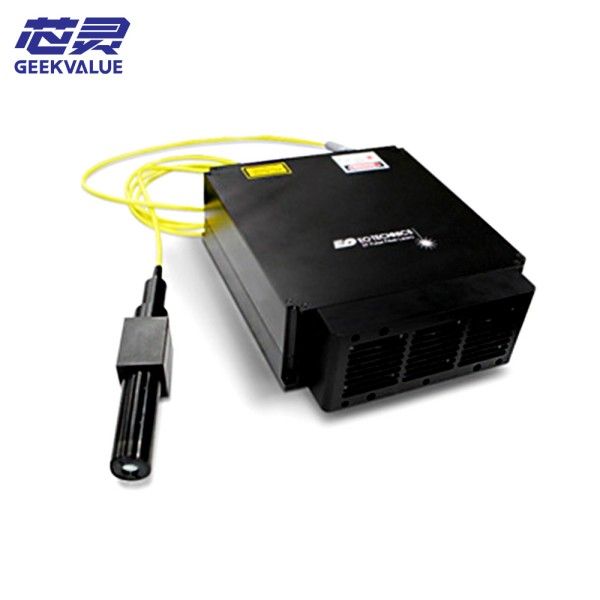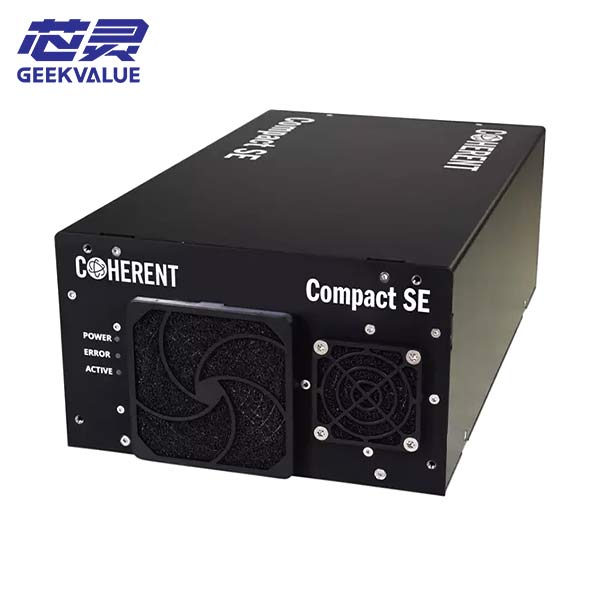EO (EdgeWave) lazerio EF40 funkcijos ir vaidmens išsamus paaiškinimas
EO EF40 yra didelės galios, didelio pasikartojimo greičio nanosekundžių Q perjungiamas kietojo kūno lazeris, kuriame naudojama puslaidininkių siurbimo (DPSS) technologija ir tinka pramoniniam tiksliam apdirbimui, lazeriniam žymėjimui, mikrogręžimui ir moksliniams tyrimams. Pagrindiniai jo pranašumai yra didelė impulsų energija, puiki pluošto kokybė ir ilgaamžiškumas, kuris ypač tinka scenarijuose, kuriems keliami dideli apdirbimo tikslumo ir stabilumo reikalavimai.
1. Pagrindinės funkcijos
(1) Didelė galia ir didelė impulsų energija
Vidutinė galia: 40 W (@1064 nm), kai kurie modeliai gali siekti 60 W.
Vieno impulso energija: iki 2 mJ (priklausomai nuo pasikartojimo dažnio).
Pasikartojimo dažnis: 1–300 kHz (reguliuojamas), kad atitiktų skirtingus apdorojimo reikalavimus.
(2) Puiki spindulio kokybė
M² < 1,3 (arti difrakcijos ribos), mažas židinio taškas, koncentruota energija.
Gauso pluoštas, tinkamas didelio tikslumo mikroapdirbimui.
(3) Lankstus pulso valdymas
Reguliuojamas impulsų plotis: 10–50 ns (tipinė vertė), optimizuojant skirtingų medžiagų apdorojimo efektą.
Išorinis trigeris: palaiko TTL/PWM moduliaciją, suderinamas su automatinėmis valdymo sistemomis.
(4) Pramoninio lygio patikimumas
Visiškai kietojo kūno konstrukcija (be lempos siurblio), tarnavimo laikas > 20 000 valandų.
Aušinimas oru arba vandens aušinimas neprivalomas, pritaikytas skirtingoms darbo aplinkoms.
2. Pagrindinės taikymo sritys
(1) Tikslus mikroapdirbimas
Trapių medžiagų pjaustymas: stiklas, safyras, keramika (mažas šiluminis poveikis).
Mikrogręžimas: PCB plokštės, kuro purkštukai, elektroniniai komponentai (didelio tikslumo).
Plonos plėvelės pašalinimas: saulės elementai, ITO laidaus sluoksnio ėsdinimas.
(2) Lazerinis žymėjimas ir graviravimas
Metalo žymėjimas: nerūdijantis plienas, aliuminio lydinys, titano lydinys (didelis kontrastas).
Plastikinis/keraminis graviravimas: nėra karbonizacijos, skaidrūs kraštai.
(3) Moksliniai tyrimai ir bandymai
LIBS (lazerinio suirimo spektroskopija): didelės energijos impulsų sužadinimo plazma elementų analizei.
Lazerinis radaras (LIDAR): atmosferos aptikimas, nuotolinis stebėjimas.
(4) Medicina ir grožis
Odos gydymas: pigmento šalinimas, tatuiruočių šalinimas (geresnis 532 nm modelis).
Dantų taikymas: kietųjų audinių abliacija, dantų balinimas.
3. Techniniai parametrai (tipinės vertės)
Parametrai EF40 (1064 nm) EF40 (532 nm, neprivaloma)
Bangos ilgis 1064 nm 532 nm (dvigubas dažnis)
Vidutinė galia 40 W 20 W
Impulso energija 2 mJ (@20 kHz) 1 mJ (@20 kHz)
Pasikartojimo dažnis 1–300 kHz 1–300 kHz
Impulso plotis 10–50 ns 8–30 ns
Sijos kokybė (M²) <1,3 <1,5
Aušinimo būdas Aušinimas oru/vandens vėsinimas Vėsinimas oru/aušinimas vandeniu
4. Konkuruojančių produktų palyginimas (EF40 ir pluošto/CO₂ lazeris)
Turi EF40 (DPSS) pluošto lazerinį CO₂ lazerį
Bangos ilgis 1064/532 nm 1060–1080 nm 10,6 μm
Impulso energija Aukšta (mJ lygis) Žemesnė (µJ–mJ) Aukšta (bet su dideliu šiluminiu poveikiu)
Sijos kokybė M² <1,3 M² <1,1 M² ~1,2–2
Taikomos medžiagos Metalas / nemetalas Metalo pagrindu pagamintas nemetalas (plastikas / organinis)
Techninės priežiūros reikalavimai Žemas (siurbimas be lempos) Labai žemas Reikia reguliuoti dujas/lęšį
5. Privalumų santrauka
Didelė impulsų energija: tinka didelio smūgio apdorojimui, pavyzdžiui, gręžimui ir pjovimui.
Puiki pluošto kokybė: tikslus mikroapdirbimas (M²<1,3).
Pramoninio lygio stabilumas: visiškai kietojo kūno konstrukcija, ilgas tarnavimo laikas, nereikalaujantis priežiūros.
Galimi keli bangos ilgiai: 1064 nm (infraraudonųjų spindulių) ir 532 nm (žalia šviesa), kad būtų galima pritaikyti prie skirtingų medžiagų.
Taikomos pramonės šakos:
Elektronikos gamyba (PCB, puslaidininkinis)
Tikslus apdirbimas (stiklas, keramika)
Mokslinių tyrimų eksperimentai (LIBS, LIDAR)
Medicininis grožis (odos gydymas, odontologija





